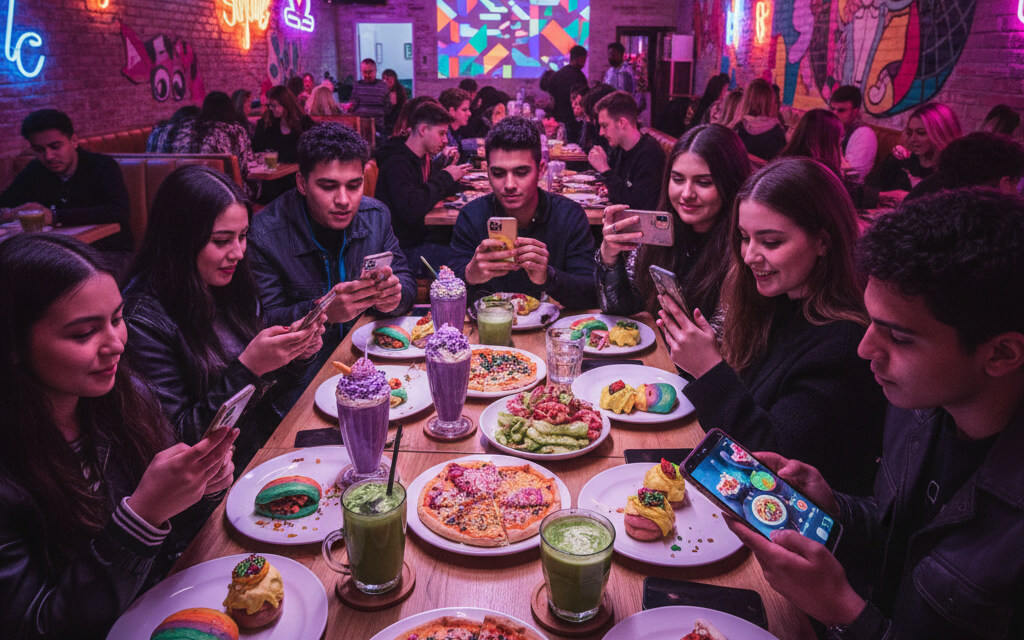October 14, 2025

The dining landscape is evolving, and one of the key drivers of this change is Generation Z. Born between the mid-1990s and early 2010s, Gen Z diners bring new expectations for convenience, sustainability, and digital engagement. This tech-savvy, socially conscious generation is reshaping the way restaurants approach everything from online ordering to community engagement.
Restaurants that fail to adapt to the needs and expectations of Gen Z risk losing relevance, while those that understand and embrace these trends can cultivate a loyal and growing customer base. Below, we explore the most important trends and strategies restaurants should adopt to connect with Gen Z diners.
Gen Z has grown up surrounded by technology. They are digital natives who expect seamless online interactions, whether it's ordering food, making reservations, or engaging with a restaurant on social media. This generation values convenience and speed, and a smooth, integrated digital experience is critical.
For restaurants, this means ensuring that your online presence is optimized for mobile devices, with easy-to-navigate websites and apps. Digital ordering, mobile payments, and loyalty programs are essential for attracting Gen Z diners who want to skip the hassle of physical menus or waiting in line. A modern website should offer features like:
Additionally, avoid common pitfalls like cluttered navigation, slow load times, or outdated menus. For more tips on creating a restaurant website that resonates with tech-savvy customers, refer to this guide on restaurant website improvements.
Additional Reference: Platforms like Squarespace and Wix Restaurants offer user-friendly solutions for creating modern, mobile-optimized websites that allow you to customize your online presence with ease (Squarespace, Wix Restaurants).
More than any other generation, Gen Z is deeply concerned about social responsibility and environmental sustainability. They want to support businesses that are making a positive impact on the community, whether it’s through eco-friendly practices, ethical sourcing, or community engagement.
Restaurants can connect with Gen Z diners by aligning their operations with values that resonate with this generation. Some ways to do this include:
One effective way to demonstrate social responsibility is by using your digital channels to share stories about your restaurant’s community involvement or sustainable sourcing efforts. Customers appreciate transparency and will likely reward businesses that share their values.
Additional Reference: Collaborating with local farms or sustainability programs like Farmigo is an excellent way to connect with the community and support local farmers (Farmigo).
For additional insights on local community involvement, check out this guide on why restaurants should sponsor local events.
Gen Z diners are avid researchers. They trust online reviews, social media, and peer recommendations more than traditional advertising. Before making a dining decision, they often turn to Google, Yelp, and Instagram to check out reviews, photos, and ratings.
This means that reputation management is crucial for restaurants targeting Gen Z. It's not just about serving great food; it's about maintaining a transparent, authentic presence across multiple platforms. Diners want to know the story behind your restaurant, the quality of your ingredients, and how you treat your staff. A strong reputation is built through:
By focusing on these elements, restaurants can build credibility and trust with Gen Z, leading to stronger customer loyalty and more positive reviews.
Additional Reference: Platforms like Yelp for Business and Google Business Profile provide powerful tools for managing your restaurant’s online reputation, encouraging positive reviews, and showcasing your credibility (Yelp for Business, Google Business Profile).
For more on building a strong restaurant reputation, check out this guide.
Although Gen Z is known for their affinity for social media and instant messaging, they still respond positively to personalized communication through email. Unlike older generations, they prefer hyper-targeted content that aligns with their interests and purchasing behaviors. Restaurants can leverage email marketing to:
When collecting email addresses, make sure to provide value to your customers. Offer incentives like discounts or free appetizers in exchange for signing up. Use segmentation and automation to send tailored messages that resonate with each segment of your audience.
Additional Reference: Tools like Mailchimp and Klaviyo are perfect for restaurants looking to run targeted, automated email campaigns that engage customers on a personal level (Mailchimp, Klaviyo).
For more on building loyalty through email marketing, refer to this guide on collecting customer emails and building loyalty.
For Gen Z, dining isn’t just about food — it’s about experiential moments and shareable experiences. This generation is heavily influenced by visual aesthetics, especially when it comes to food. Restaurants that offer unique presentations, Instagram-worthy plating, and interactive menus are more likely to attract Gen Z diners who want to capture and share their dining experience on social media.
Key elements that appeal to Gen Z include:
Creating a memorable dining experience goes beyond food; it involves offering an environment that encourages customers to interact with your brand online and offline.
Generation Z is redefining what it means to dine out. This generation expects more than just good food; they crave digital convenience, social responsibility, and authentic, shareable experiences. Restaurants that adapt to these new expectations will not only appeal to Gen Z but will also establish long-term loyalty by staying ahead of trends in digital engagement, reputation management, and community involvement.
By embracing modern websites, reputation management, sustainable practices, and personalized loyalty programs, restaurants can connect with this influential demographic and secure their place in the future of dining.
Stay up to date with the latest tips, expert insights, product reviews, and step-by-step guides to help you grow, create, and succeed—no matter your industry or passion.